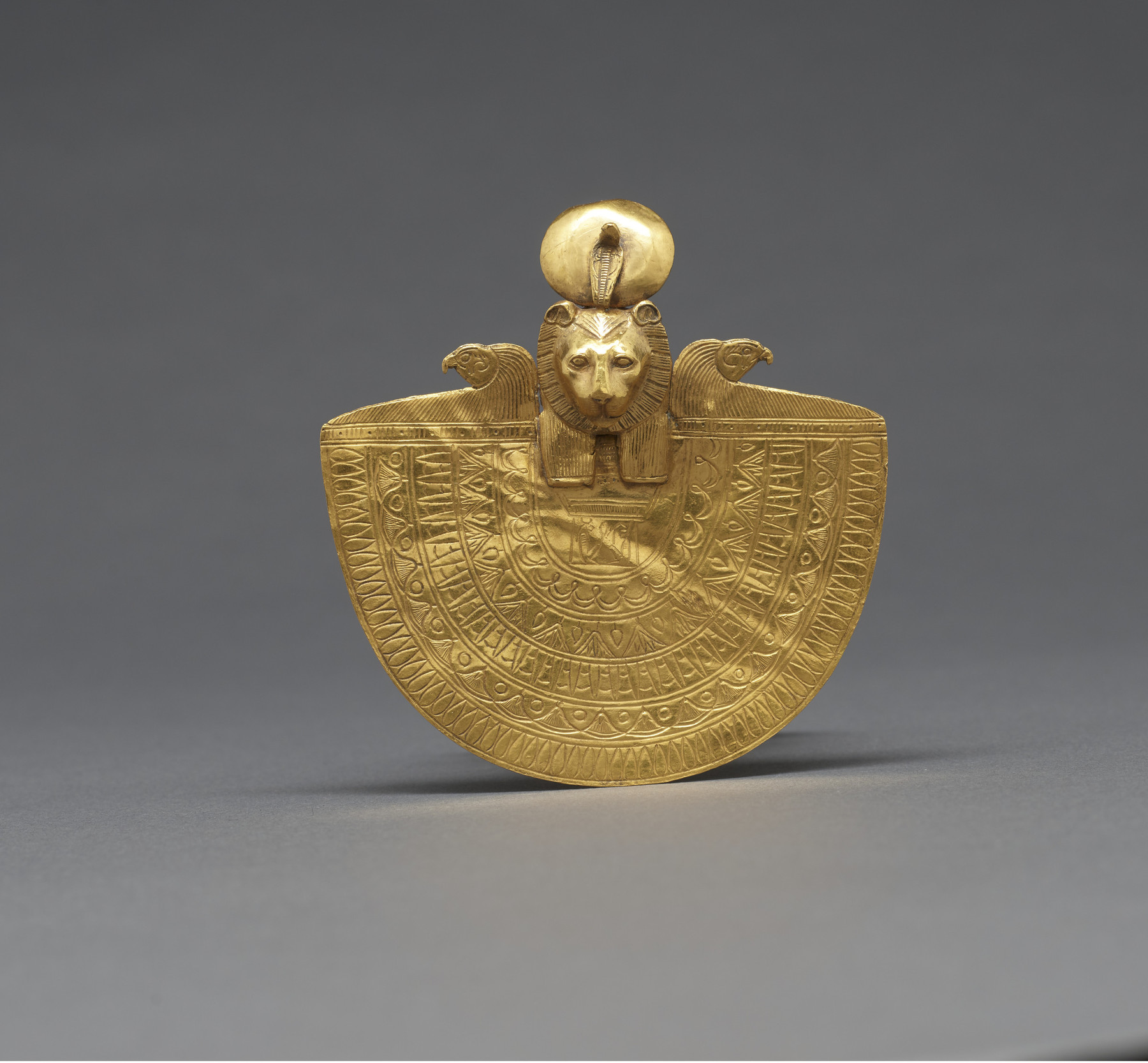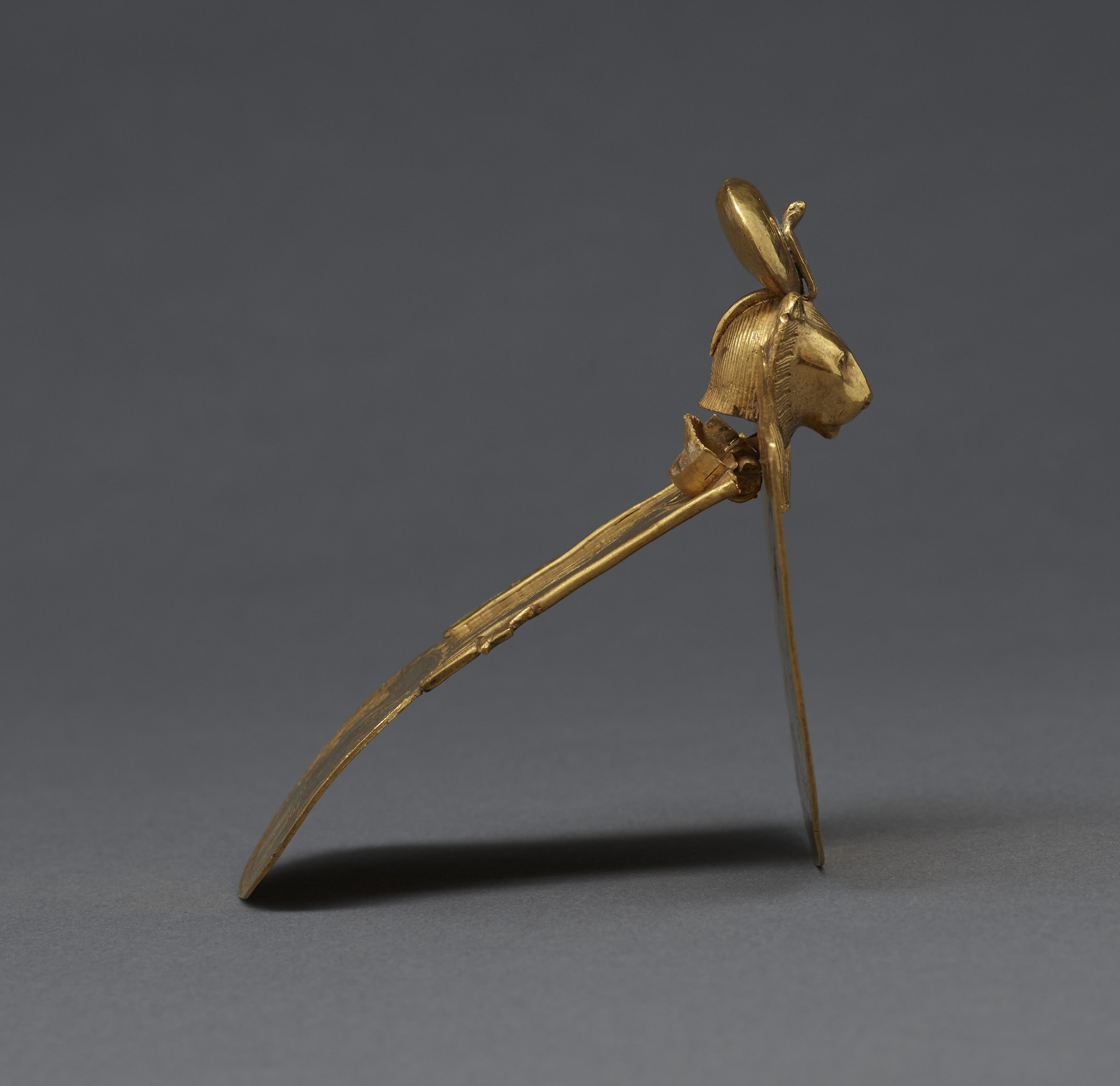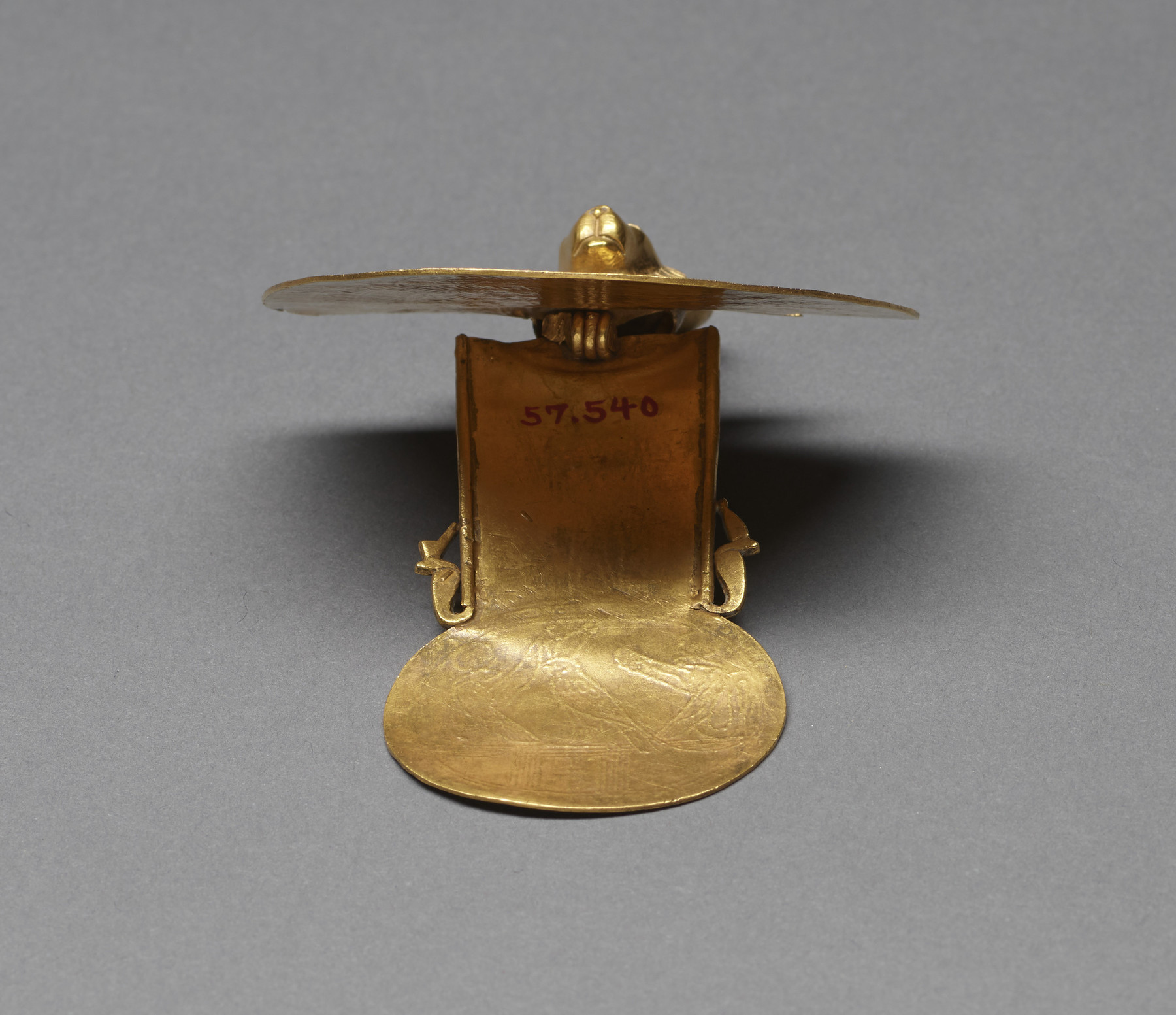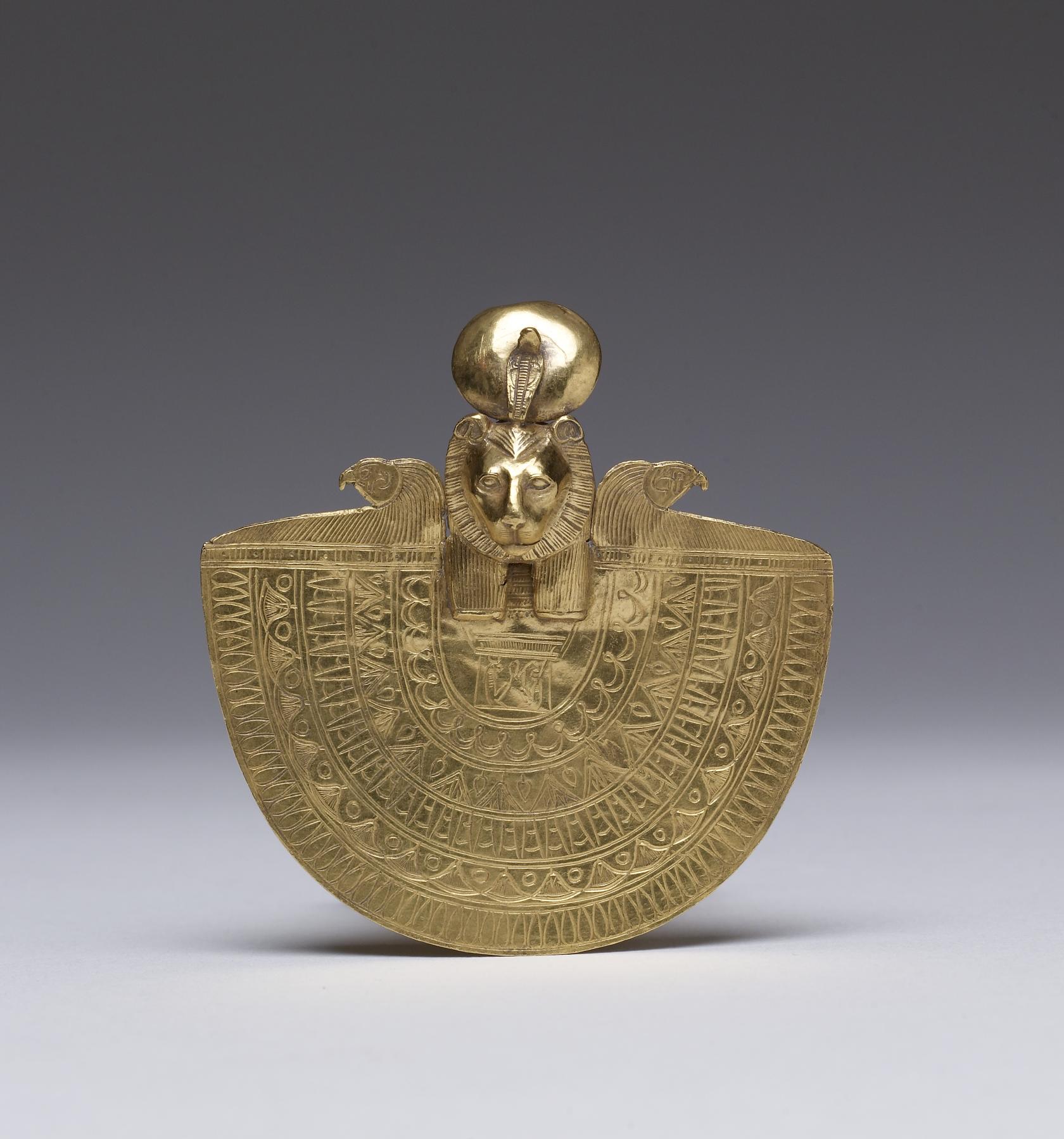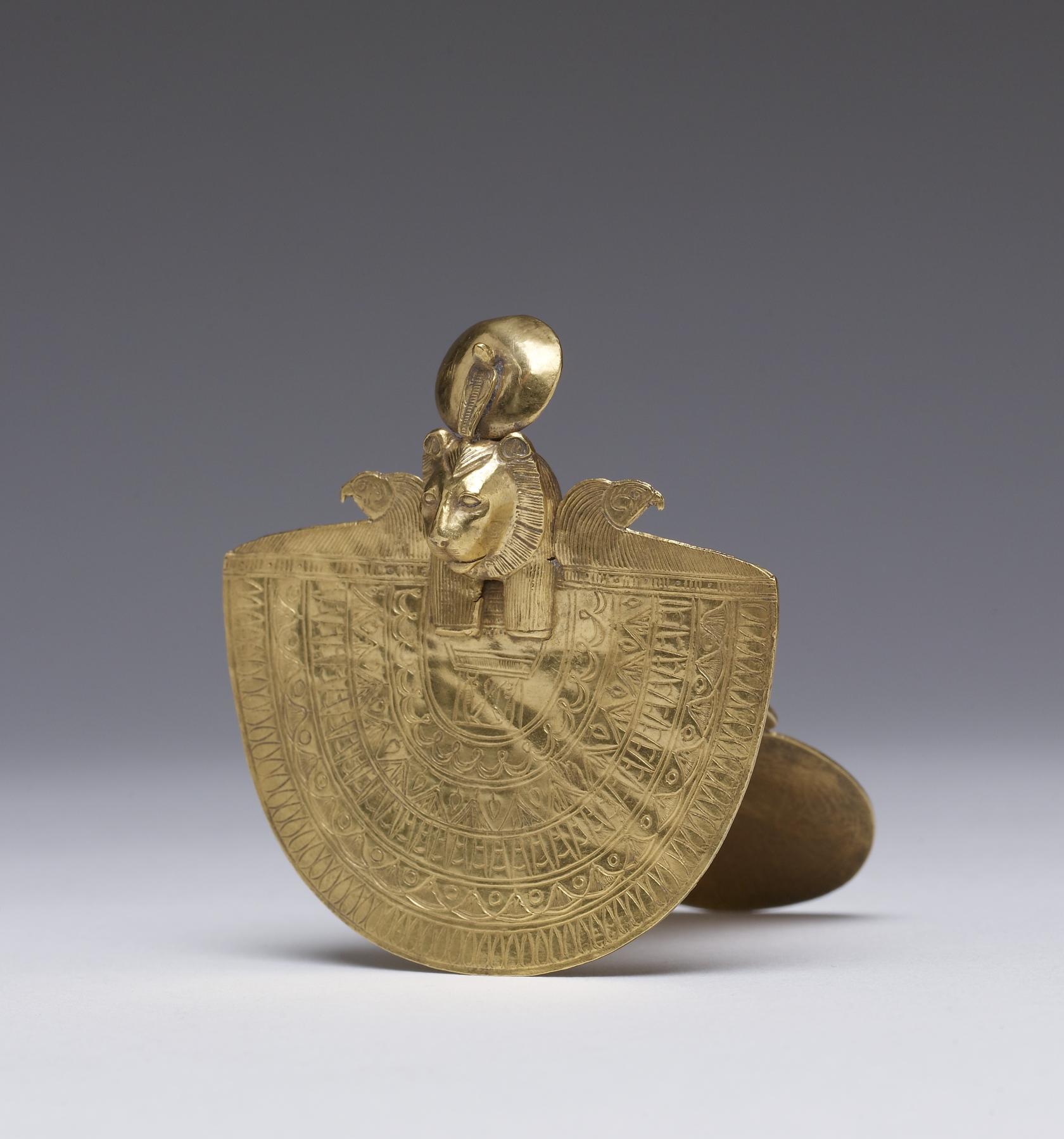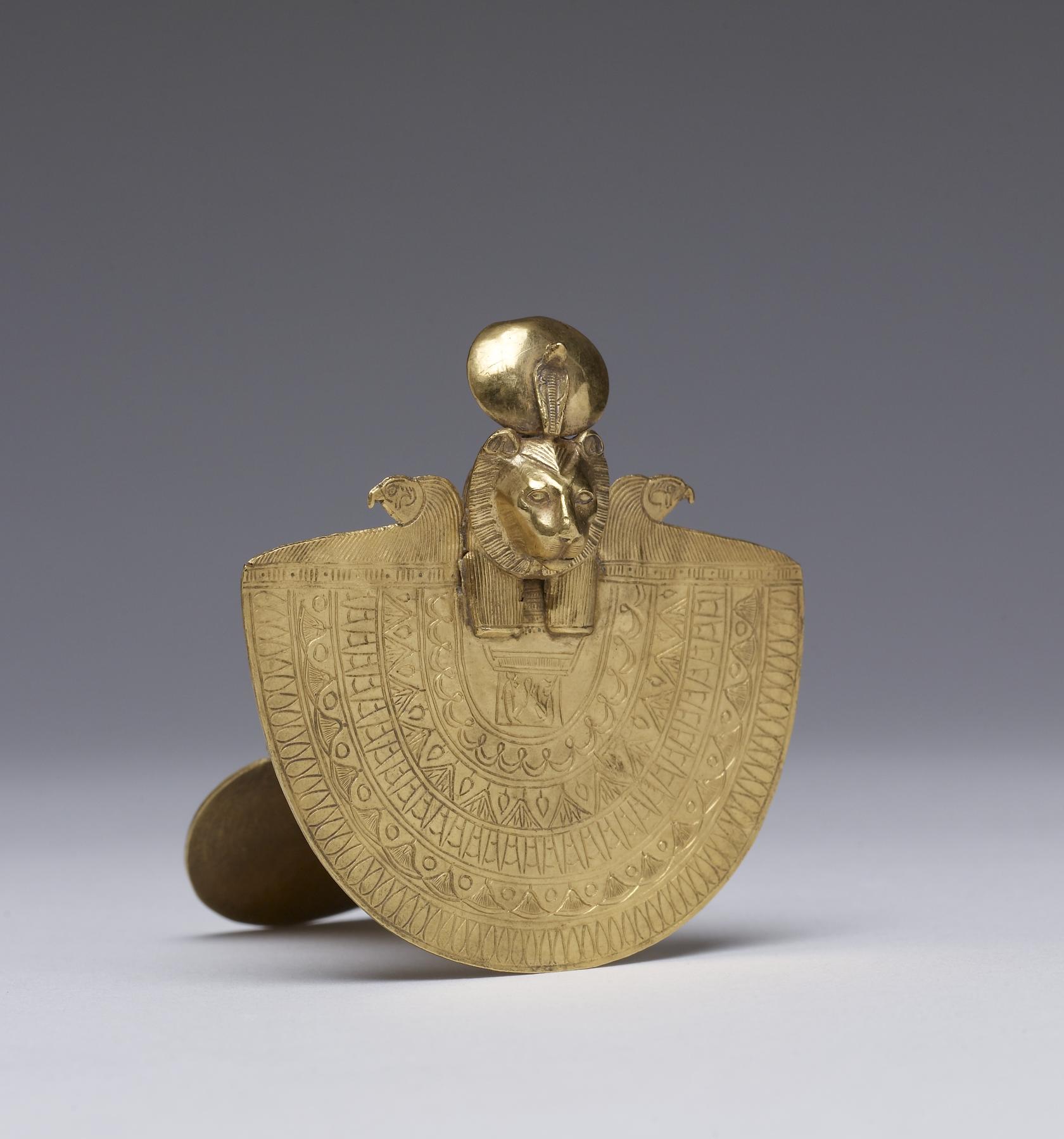Aegis with the Head of Sekhmet
The collars worn by both Egyptian men and women were composed of two main parts: in front, a broad collar (called "wesekh") decorated with floral elements, and a v-shaped counterpoise (called "menat") falling behind the neck to balance the weight of the collar. Such a combination was not only used as decoration but also as a ritual instrument by holding the "menat" in the hand and rattling the beads of the collar.
The three-dimensional depiction of "wesekh" and "menat" combined with a divine head became an important symbol. The head of a feline goddess atop this model collar indicates that it is intended as a personification of her powers, conveying in its decoration the ability of the lioness both to protect and to nourish the king. Her dual nature is evoked by her stern and watchful face on the front side, and by her representation as a mother suckling a young prince on the reverse. This precious object may have been produced for someone of the royal family.
Provenance
Provenance (from the French provenir, 'to come from/forth') is the chronology of the ownership, custody, or location of a historical object. Learn more about provenance at the Walters.
Henry Walters, Baltimore, 1924, by purchase; Walters Art Museum, 1931, by bequest.
Exhibitions
| 2014-2015 | Die Entstehung der Welt. Ägyptens letzter Schöpfungsmythos (The Origin of the World. Egypt’s Last Creation Myth). Roemer- und Pelizaeus- Museum, Hildesheim; Kunsthalle Leoben, Leoben. |
| 2013-2014 | Egypt’s Mysterious Book of the Faiyum. The Walters Art Museum, Baltimore. |
| 2012 | Chefs-d'oeuvre des derniers pharaons. Musée Jacquemart-André, Paris. |
| 1998-2001 | Highlights from the Collection. The Walters Art Gallery, Baltimore. |
| 1996-1997 | Mistress of House Mistress of Heaven: Women in Ancient Egypt. Cincinnati Art Museum, Cincinnati; Brooklyn Museum, Brooklyn. |
| 1979-1980 | Jewelry - Ancient to Modern. The Walters Art Gallery, Baltimore. |
Conservation
| Date | Description | Narrative |
|---|---|---|
| 10/8/1974 | Treatment | cleaned |
| 7/10/1979 | Examination | examined for condition |
| 2/23/2012 | Examination | Examined for loan |
| 2/23/2012 | Examination | The aegis is made from hammered gold sheet. The edges of the gold sheet are cut using a chisel. The head and disk are raised and the halves soldered together. The head is filled with a bulked unidentified resin. The resin is yellow in color. The bulking agent is probably calcite. |
Geographies
Egypt (Place of Origin)
Measurements
H: 2 11/16 x W: 2 9/16 x D: 2 11/16 in. (6.8 x 6.6 x 6.8 cm)
Credit Line
Acquired by Henry Walters, 1924
Location in Museum
Accession Number
In libraries, galleries, museums, and archives, an accession number is a unique identifier assigned to each object in the collection.
In libraries, galleries, museums, and archives, an accession number is a unique identifier assigned to each object in the collection.
57.540

